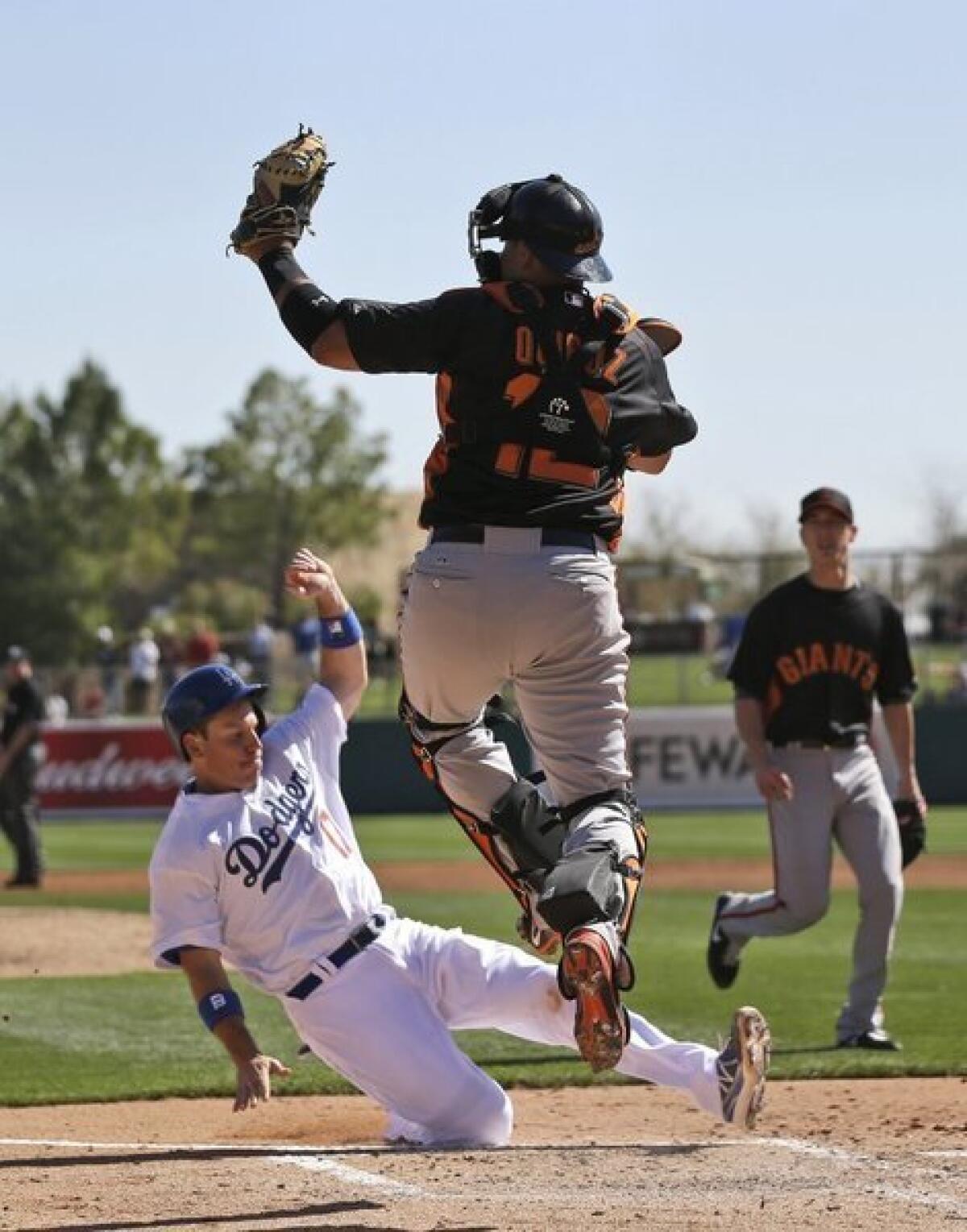Dodgers will edge out Giants, math model predicts

- Share via
Deliver the champagne to Chavez Ravine and Anaheim. The Los Angeles Dodgers will edge out the San Francisco Giants by a game in the National League West division, while the Angels will tie the Oakland Athletics in the American League West.
If baseball is played on paper, that’s what should happen, according to mathematician Bruce Bukiet of the New Jersey Institute of Technology.
Like the proverbial groundhog does each February, Bukiet emerges at the end of spring training season with his prognostications for America’s national pastime.
An admitted baseball wonk, Bukiet has been running his “Moneyball” analyses for 13 years to forecast the record of each Major League Baseball team, much like Davidson College’s Tim Chartier has his math students calculate the NCAA men’s basketball tournament brackets.
The Dodgers should win 88 games, to San Francisco’s 87, while the Angels and Athletics each should win 92, according to Bukiet’s model.
Expect the Atlanta Braves to win 94 and clinch the NL East by one game over the Washington Nationals. The St. Louis Cardinals should win 90 and take the Central Division by three games, over the Cincinnati Reds. Bottom line: The World Series Champion Giants chill in their foggy home while the rest of those teams play ball in October.
The Detroit Tigers should have the best record in baseball, with 102 wins, and clinch the AL Central early, by 20 games over the Chicago White Sox. Bukiet makes no prediction about whether the Yankee-slaying Tigers will become meek Tiggers once the World Series comes around.
The tightest race will be in the AL East, with the Toronto Blue Jays, the Tampa Bay Rays and the New York Yankees each winning 87 games.
Bukiet tags the Houston Astros with the worst record: .346, followed closely by the Marlins, Cubs, Twins, Rockies and Orioles.
Bukiet relies on the Markov Chain method, which ultimately gives him a 25-by-25 matrix for each player, showing his probability of changing a state of a game in one appearance at the plate.
What you know as an “at bat” is just a transition from one state of the game to another. If you have to do the math, there are the 25 “states” of the game during any half-inning. There either is, or is not, a runner at first, second or third, so that’s two to the third power, or eight possibilities. There are either zero, one or two outs. Eight times three is 24. The end state, three outs, is the final state, for 25 states of the game.
Bukiet’s best bragging rights are his back-to-back prediction championships at baseballphd.com in 2010 and 2011. Last year, though, he picked only two of the six division winners.







